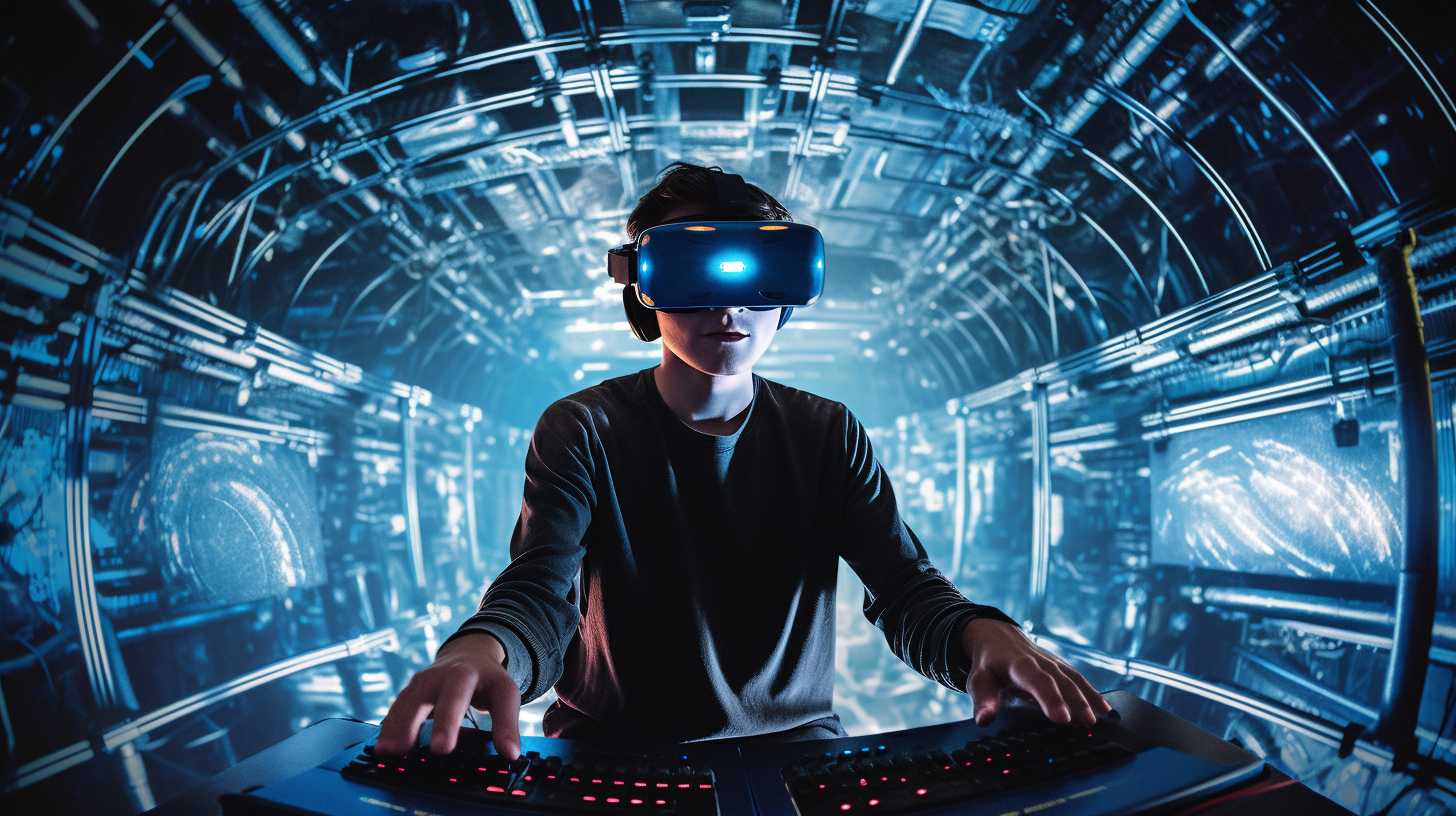The virtual reality in gaming market has undergone a transformative evolution in recent years, driven by rapid advancements in immersive technology, consumer demand for more interactive experiences, and the proliferation of powerful gaming hardware. Once seen as a futuristic concept, virtual reality (VR) gaming is now a mainstream segment of the global gaming industry, capturing the imagination of players and developers alike.

This blog delves into the dynamic landscape of the virtual reality in gaming market, exploring its key drivers, technological innovations, regional insights, challenges, and the outlook for the future.
What Is Virtual Reality in Gaming?
Virtual reality in gaming refers to the use of VR technology to create simulated environments that allow players to interact in a three-dimensional, immersive world. Unlike traditional gaming, where interaction is limited to screens and controllers, VR gaming enables players to use motion controllers, head-mounted displays (HMDs), and even full-body tracking to engage with the game environment as if they were physically present.
VR games span a wide range of genres including adventure, simulation, horror, puzzle, sports, and multiplayer role-playing. Major VR platforms include Oculus (Meta), HTC Vive, PlayStation VR, and Valve Index, among others.
Market Overview
The virtual reality in gaming market has shown robust growth over the past decade. The convergence of VR hardware improvements, compelling game content, and rising consumer interest has fueled an upward trajectory. Market analysts project significant CAGR through 2030, as both standalone and tethered VR gaming devices become more accessible and affordable.
This market includes:
-
Hardware: VR headsets, haptic feedback devices, VR gloves, and motion sensors
-
Software: VR-specific games, gaming platforms, and immersive game development engines
-
Services: Technical support, game streaming, cloud-based VR gaming platforms
Key Drivers of Growth
1. Technological Advancements in Hardware
Improved resolution, wider fields of view, reduced latency, and ergonomic designs have made modern VR headsets more user-friendly and immersive. Standalone devices like the Meta Quest series have removed the need for expensive gaming PCs, making VR gaming more accessible to a broader audience.
2. Rising Demand for Immersive Entertainment
Today’s gamers seek experiences that go beyond passive interaction. VR offers total immersion, transforming users from players to participants. This demand is especially strong among Gen Z and millennial gamers who value engagement and realism.
3. Content Expansion
The release of high-quality, narrative-rich VR titles such as Half-Life: Alyx, Beat Saber, and The Walking Dead: Saints & Sinners has elevated consumer interest and retention. Collaborations between major game studios and VR platforms are fueling a new wave of content creation.
4. Growing Esports and Online Communities
VR is becoming increasingly popular in the competitive gaming scene. Games like Echo VR and Population: One have cultivated online communities and esports tournaments that leverage immersive gameplay for audience engagement.
5. Cross-Sector Collaboration
Developers are partnering with sectors outside gaming, such as education and fitness, to enhance game applications. This cross-sector innovation extends the value proposition of VR gaming.
Regional Market Insights
-
North America is a dominant region due to its strong gaming culture, high disposable income, and early adoption of VR technology.
-
Europe follows closely, with countries like Germany and the UK seeing strong market penetration.
-
Asia-Pacific is expected to witness the fastest growth, led by China, Japan, and South Korea, where mobile gaming and VR arcades are booming.
-
Latin America and the Middle East are emerging markets, showing increased interest but facing infrastructural and affordability challenges.
Challenges Facing the Virtual Reality in Gaming Market
Despite promising growth, the virtual reality in gaming market faces several obstacles:
-
High Cost of Entry: While prices are falling, high-end VR systems still represent a significant investment.
-
Limited Content: Although growing, the library of AAA VR titles is still limited compared to traditional gaming platforms.
-
Motion Sickness and User Comfort: Not all users adapt easily to VR; motion sickness and discomfort continue to affect user retention.
-
Hardware Compatibility and Upkeep: VR systems often require powerful hardware setups and regular updates, posing usability barriers.
Future Outlook and Trends
-
Wireless and Standalone VR Devices
The shift toward untethered VR systems will continue, allowing users to enjoy immersive gaming without complex setups. -
Cloud Gaming Integration
Cloud-based platforms will soon support VR gaming, reducing the need for local storage and processing power. -
AI-Enhanced Interactions
Artificial intelligence will enhance NPC behavior, adaptive gameplay, and personalized experiences in VR gaming environments. -
Social VR Gaming
As remote interaction becomes a norm, social VR platforms will become increasingly popular, enabling multiplayer gaming and virtual hangouts. -
Sustainability and Green Tech
Future VR devices will integrate sustainable materials and energy-efficient technologies, addressing environmental concerns.
The virtual reality in gaming market is also influenced by cybersecurity concerns, making it indirectly relevant to the growing cyber insurance market. With VR games collecting user data, personal preferences, and real-time interactions, data protection and liability coverage are becoming critical.
Conclusion
The virtual reality in gaming market is no longer a speculative space—it is a thriving, fast-evolving industry that is redefining digital entertainment. As VR becomes more sophisticated, affordable, and content-rich, it is set to change not just how we play games, but how we experience stories, connect with communities, and interact with virtual environments.
Game developers, technology firms, investors, and consumers all have a role in shaping the future of this dynamic market. As challenges are overcome and innovation continues, virtual reality in gaming is well-positioned to become a foundational pillar of the broader gaming industry.
Related Trending Reports
| Gaming Accessories Market |
| Fire Protection System Market |
| Sports Technology Market |
| Smart Building Market |
| Smart TV Market |
Comments on “How Virtual Reality in Gaming Market Is Reshaping Entertainment”